- About MAA
- Membership
- MAA Publications
- Periodicals
- Blogs
- MAA Book Series
- MAA Press (an imprint of the AMS)
- MAA Notes
- MAA Reviews
- Mathematical Communication
- Information for Libraries
- Author Resources
- Advertise with MAA
- Meetings
- Competitions
- Programs
- Communities
- MAA Sections
- SIGMAA
- MAA Connect
- Students
- MAA Awards
- Awards Booklets
- Writing Awards
- Teaching Awards
- Service Awards
- Research Awards
- Lecture Awards
- Putnam Competition Individual and Team Winners
- D. E. Shaw Group AMC 8 Awards & Certificates
- Maryam Mirzakhani AMC 10 A Awards & Certificates
- Two Sigma AMC 10 B Awards & Certificates
- Jane Street AMC 12 A Awards & Certificates
- Akamai AMC 12 B Awards & Certificates
- High School Teachers
- News
You are here
Mathematical Treasure: Taylor's Treasury of Mathematicks
Thesaurarium Mathematicae or The Treasury of the Mathematicks (1687), appears to have been intended as a comprehensive mathematics reference for the common man of the 17th century. The author, John Taylor, merely listed himself as a “gentleman”; for lack of other qualifiers, we can assume that he was perhaps a writing and reckoning master.
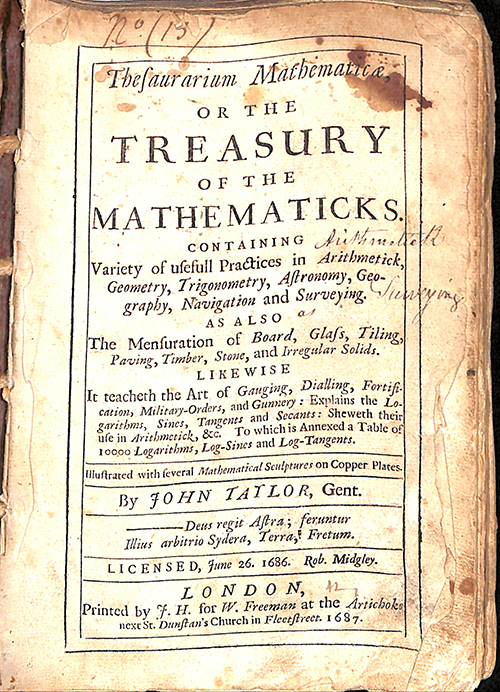
The “Table of Contents” indicates the scope of mathematical coverage. It should be noted that, by this time in England, the applied nature of mathematics was very much appreciated.
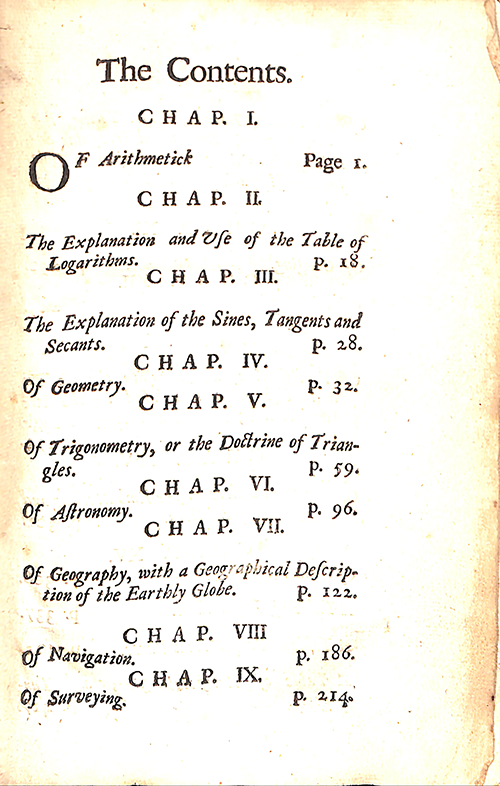
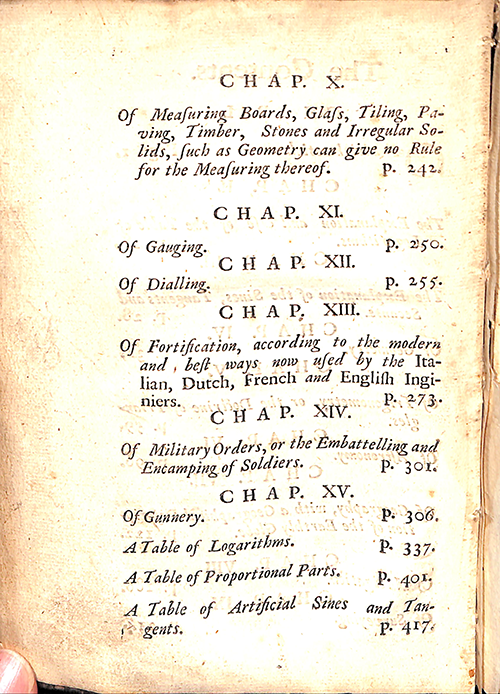
On page 1, Taylor provided the reader with a definition of arithmetic as “the art of numbering well.” This is a very old definition and, as the adjoining Latin quotation indicates, is from Boethius’s sixth century Arithmetic.

A similar basic definition is given for geometry with a stress on measurement, a physical rather than intellectual activity. Since Euclid’s Elements had by this time been resurrected and become highly esteemed for its logical deductive basis, this emphasis appears strange.
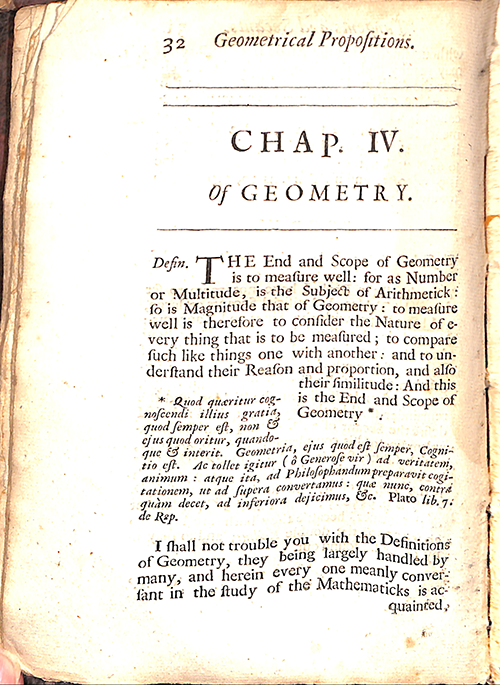
Despite the apparent concern with geometrical applications, the discussion on page 33 appears to coincide with a Euclidean approach to geometry instruction.

Chapter XIII of the Treasury is devoted to a discussion of the design and construction of fortifications. The introduction of the cannon into siege warfare radically changed the dynamics of defense. Fortification walls now had to be constructed to withstand and deflect the destructive force of artillery. In the design of the new fortifications, geometry was brought to the fore. The enclosure walls of forts now assumed pentagonal or hexagonal shapes. The vertices of these polygons were extended into crenellations from which ‘‘a killing field” of firing could be directed along the “gorge’’ flanked by these extensions. Yes, there was an arms race in the 17th century. As a part of the unfolding subject of military science, one had to know also the features of the opponent’s fortifications.
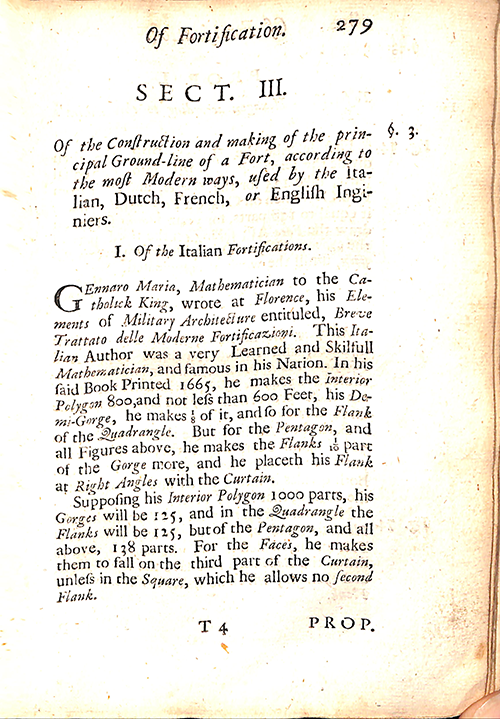
The drawings in Plate VII summarize the construction features discussed in the text on the subject of fortifications.
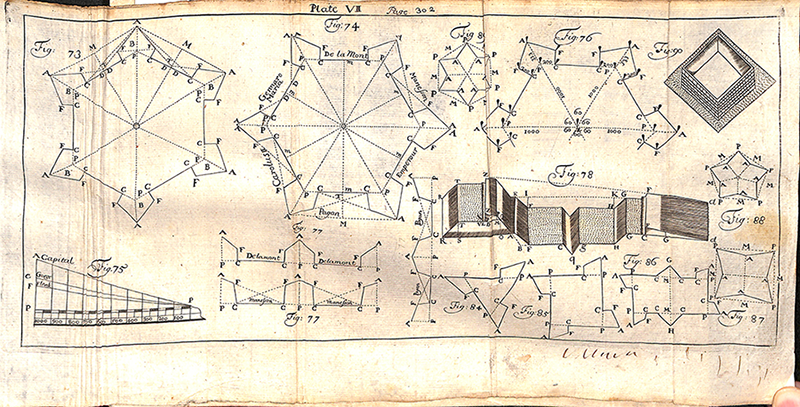
The images above were obtained from the Rare Book Collection at Franklin and Marshall College, Lancaster, Pennsylvania.
See additional pages from another copy of Thesaurarium Mathematicae here in Convergence.
Frank J. Swetz (The Pennsylvania State University), "Mathematical Treasure: Taylor's Treasury of Mathematicks," Convergence (February 2016)




